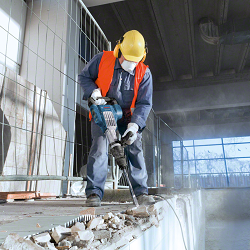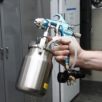The secrets of working with the airbrush
Despite its apparent simplicity, working with an airbrush requires a high level of skill from a person. Without skill and long practice it is almost impossible to decorate small details, as well as work on fine painting. All this requires an understanding of the process itself. In addition, it is better to know exactly what paints you can use for an airbrush.
Content
Paints: types, parameters, operation
The first thing that needs to be clarified before you start working with an airbrush is paint consistencywith which to deal.
Important! In airbrushes it is allowed to use only fine paint. In fact, this means that the structure of paints should not contain large particles so that they do not clog the device nozzle.
However, all modern airbrush paints contain a lot of additives and additives (retarder or retarder, etc.). Such additives make the application process more effective, allowing you to apply new artistic techniques that are not possible with conventional spraying. In some cases, the paint dries longer.
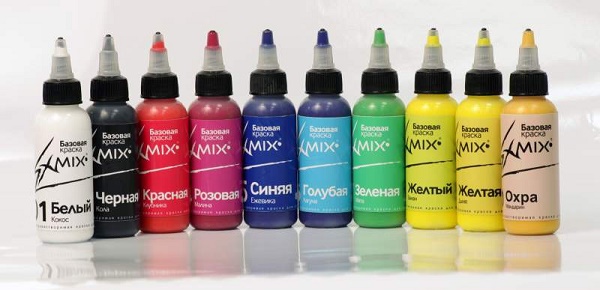
Varies and application method. For example, acrylic paint based on water can be applied in one or in several stages. In this case, it all depends on the task, whether there is a need to create transitions and semitones. Urethane mixes must be varnished. A multi-component composition must be applied in 3 stages.
Acrylic paint and its features
Acrylic paints for airbrushing are the most popular formulations for applying to various surfaces. This composition has many significant advantages that make it universal for application.
- The color palette has many gradations.. Both neutral colors and shades are distinguished. There are rich bright colors that allow you to convey the contrast.
- Increased level of coverage. This item eliminates the need to reapply. Unlike other types of mixtures, in this case there is no need to apply paint in several layers.
- Excellent adhesive properties. At the same time, the hardening time of the paint remains significant, which allows experimenting with the form of application.
- Non toxic. The basis of acrylic paints is a water-dispersed mixture.
- You can use acrylic almost everywhere.. Paints are suitable for any type of surface.
Acrylic paints for water-based airbrushing are extremely convenient when working with your own hands. They are easily diluted to the desired consistency. Distilled water is sufficient for mixing acrylic paints.
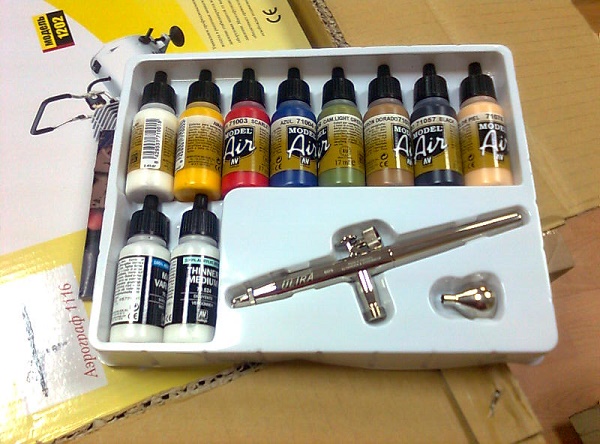
It is important to remember that after drying, water-based acrylic hardens. On the painted surface a thin layer of plastic is formed. This layer has elastic properties, but it also perfectly protects the drawing from external influences, including and temperature drops.
Rinse off acrylic paint is easy. For this you need to have special paint strippers. However, a wash can also give an interesting effect, which some designers and artists use.
Nitroemal and its features
The second most popular means of application. It is somewhat more difficult to learn how to paint with an airbrush using nitro-enamel paints, but this experience can be very useful. Most often this type of paint used in decorative application on cars. Nitroemal has a number of useful properties and advantages, due to which many artists prefer it.
- Drying time. Nitroemal dries significantly faster than acrylic. This allows you to perform work more quickly.
- Transfer of fine lines, outlines, contours. No other types of paints are not able to form a pattern as clearly.
- Translucent fill. This is a decorative effect that occurs when certain airbrush manipulations. Adds a volume to the picture.
However, these colors are not without some minuses. Shades and halftones when applied with nitrokrass look less bright and pronounced. Coverage parameters are also significantly lower than that of acrylic. Working with two colors, it is quite difficult to get a clear decorative tone. Experts recommend the use of a light substrate in the event of gray shades.
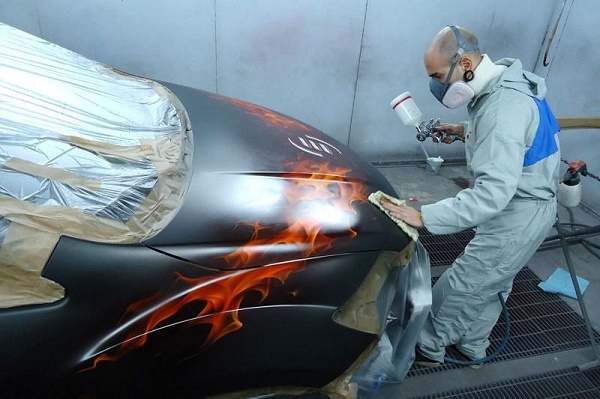
Important! Not all airbrushes are adapted to work with nitro-paint. We'll have to re-buy a special model that will cost more.
Nitrokraska, as it is easy to guess from the name, quite toxic. To work with such material requires a special room. Spraying paint in the air can lead to undesirable consequences. Boxing for painting the car body is best suited for such tasks. In this room, organized ventilation, no dust. You can stay calm for the fact that nitrokraska will fall on an undesirable surface. It is important to remember that you can paint only in special clothes. Work without a respirator can adversely affect overall health.
Watercolor paints and features of their operation
Airbrushing drawings for beginners can be tricky. That is why at first it is important to use paints that will be easy to use. Watercolor paints are beautiful suitable for domestic needs. The scope of watercolor often limited to the surface of the paper and plaster. Experts believe that this type of paint will be optimal in order to master the art of airbrushing. The main advantages of watercolor paints are:
- excellent miscibility;
- very easy washability from the surface;
- easy and neat spraying.
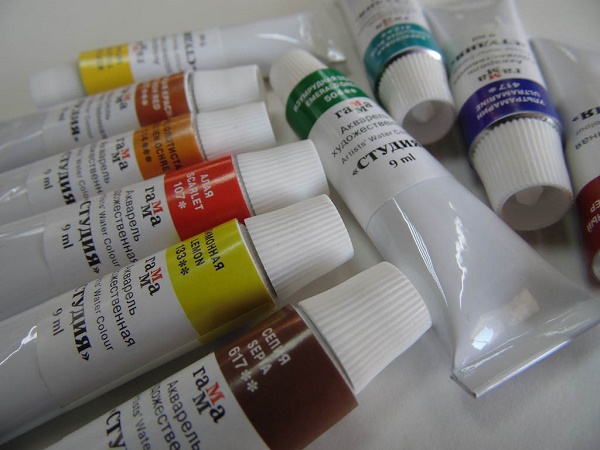
Today there are dry watercolor paint for airbrushing. However, there are traditional, in the form of pasta, created on a water basis. Unlike acrylic, watercolor can be diluted with plain, not distilled water.
On a note! To paint with an airbrush using watercolor is quite simple. This is the best option for getting the first experience and honing the existing skills.
Soil and its varieties
Painting with an airbrush on metal or plastic includes pretreatment, incl. primer coating.For quality application is extremely important not only to determine the type of paint, but also to choose a primer. This material is a primary (base) coating for leveling the surface, which directly determines which type of paint will be used in the work.. It is the soil that determines the strength of the paint composition. In addition, without a primer some paint is simply impossible to apply.
For high-quality paint application, the primer must have a number of characteristics:
- high degree of adhesion;
- good covering power;
- smooth surface, the presence of silky textures;
- repellent properties of the coating so that the paint is not absorbed.

There are three main types of soil:
- adhesive;
- epoxy;
- primer filler.
Adhesive
To create a good bond between the surface on which the application will be carried out and a layer of paint, this type of primer is used. The main advantage of adhesive soil is fast drying. In addition, it is very well kept on the metal structure and the plastic surface. This allows it to be applied both on the car body and on plastic parts.
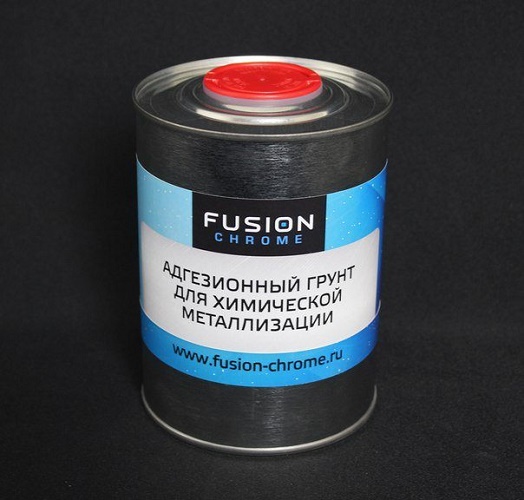
Epoxy
The first thing that is important to know to anyone who prefers to use this type of soil - the material is highly toxic. That is why in the room where it is planned to use the soil, you must have strong ventilation. It is desirable to work with such material in a respirator. The main characteristics of epoxy are as follows:
- the coating layer is thick;
- very long operational term;
- easy to sand;
- resistant to corrosion.
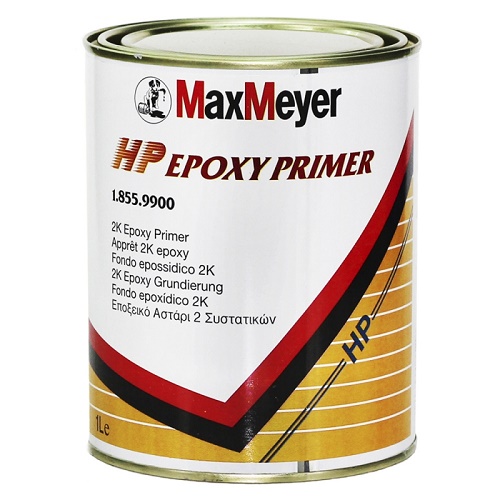
Working with epoxy primer, you should follow the rules of operation. It is important that the metal surface is properly treated before applying the primer. If the metal is not clean enough, the primer will fall unevenly.
Soil filler
This soil composition is a two-component. Most often it is a cross between base acrylic and urethane. Such a primer can be applied in two ways: on a prepared cleaned surface or on an epoxy. It is not recommended to use this type of primer together with products that are based on acid.
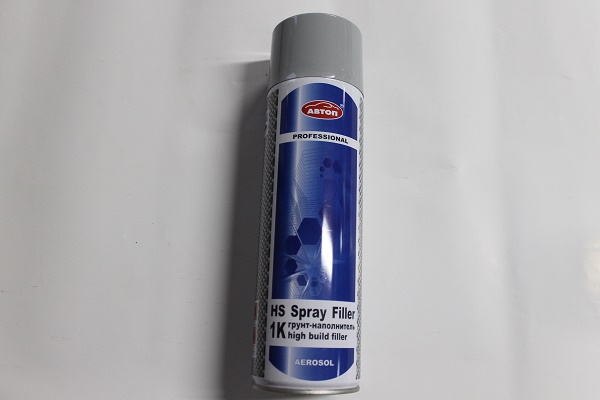
Stages of staining
Of course, the process of applying paint on the prepared surface occurs in stages. There are five stages in total.
- Sketch selection. You should come up with a drawing or select it from thousands of available sketches. It is important to model how it will look on the surface, take into account its size and content, so that it fits into the context without disturbing the integrity and composition. Next, the picture is transferred to the paper.
- Preparation of the area for painting works. Everything is quite simple here, it is important to make sure that everything that may be needed in the process of work is at hand. In some cases, will have to act fairly quickly. It is necessary to purchase in advance the means to eliminate stains.
- Paint selection. A very important stage on which the brightness, saturation, structure and durability of the pattern will depend. Do not save when choosing colors.
- The process of applying paint on the prepared surface. If all requirements are met, you can start painting.
- Drying and fixing the material with the help of varnishing. After painting, when the surface is ready for application, additional processing is carried out. Varnishing gives the picture a complete look.The work acquires a glossy structure and retains its properties for a longer period. However, lacquering is not carried out in all cases.
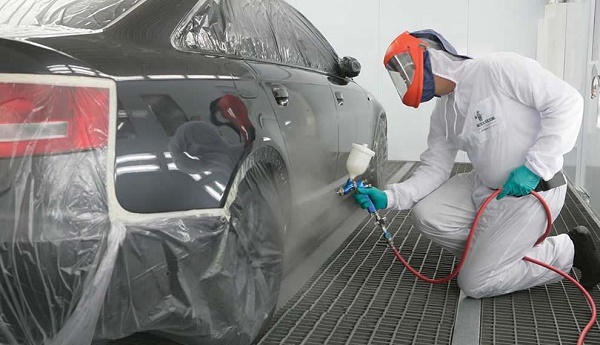
Most often, metal body parts come in the so-called. shipping soil. It has a rough texture and external damage, so it must be removed first. Further covering:
- grind;
- wash;
- dried;
- degreased with the help of "white spirit".
If all of the above types of work are completed, you can proceed directly to the application. In some cases, the painting process also includes tinting. Toning is the creation of halftones when applying a paint material on a substrate. This effect is achieved by mixing paints of a certain type and composition. Toning allows you to create not only shades, but also transitions, which is extremely important when working with an airbrush. The only drawback is the complexity of the process itself. Toning requires significant skills and experience from the artist.
Paint application
Painting with an airbrush is not as complicated as it may seem at first glance. However, beginners will have to start their training from the basics, before they can advance in acquiring the skills of an even, continuous paint application to the surface.There are three basic rules by following which you can avoid the most common mistakes.
- It is very important for the first time to spray paint over draft paper or a piece of cardboard. The first supply of paint from the needle knocks out lumps and other structural irregularities that, hitting the surface, would leave the pellets, dots or other artifacts. Of course, to begin drawing with such a "spittle" from the injector is not the best idea. In addition, when the first supply of the coloring composition is relieved excess pressure. To adjust the degree of supply of paint can be limited to a small stream, and then get to work.
- Application of the material should be smooth, without jerks and twitches.. If the brush is prone to small but constant tremor, it will be rather difficult to master the skill of continuous smooth feeding. With a sharp jerk in the direction of the applied structure is sprayed at different angles, which, of course, affects the tone of the picture. The second big problem is smudges. They also often occur when uneven application due to jerks. Especially smudges are noticeable when working with vertical material.
- In no case should not bring the painting device close to the painted surface. Under pressure there are rebounds of some of the largest drops, there are divorces, which are then very difficult to eliminate. It is important to always keep the same distance when applying paint. First of all, it is important for holding the tone, which is the same for the whole pattern. If in different corners it will be different, you will have to make an appropriate adjustment.
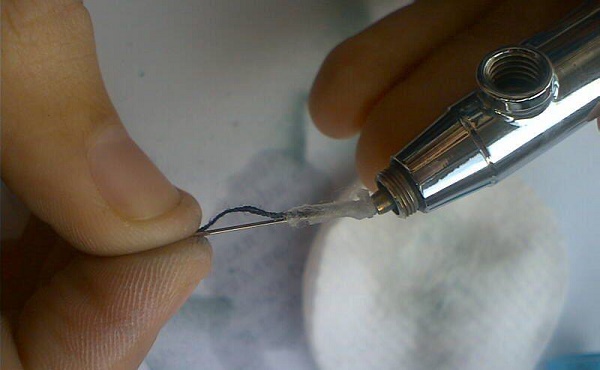
When using water-based paints, it is enough to rinse the device under running water. When working with other painting materials may be required. special cleansers.
Stencil use
Quite often stencils are used for airbrushing. This greatly simplifies the task of the artist.However, the quality of the pattern when applied using stencils remains schematic, it is impossible to achieve a clear study, depth and volume using this auxiliary tool.
Stencils are:
- disposable;
- reusable.
Important! You can make them both independently and purchase already available for sale. As a rule, the stencil helps to mask the flaws of the body, small chips, scratches and rubbing, but do not hide significant defects with the help of paint overcoat.
Opinions about the stencil of specialists differ. Some argue that this is an effective and relatively inexpensive way to quickly transform a car body or paint a wall without additional skills. Others argue that the drawing after painting through a stencil requires substantial improvement, which, in terms of time and effort, is not inferior to the work started “from scratch”.
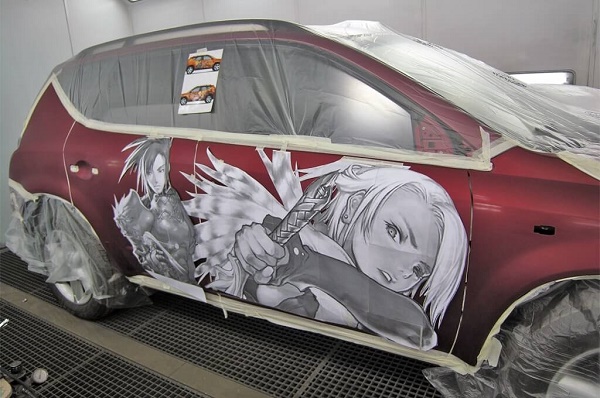
The advantage of using a stencil is its prevalence and accessibility. Also its easy to make from improvised means (film, paper) if necessary.
Tips and tricks for painting fabrics, models, cars
Of course, as in any kind of art, there are some peculiarities when painting fabrics.However, the masters of aerography on metal, as well as when painting models, have their secrets.
- After applying the airbrush pattern on the fabric should be done final ironing Thermal exposure will help the fabric even better absorb the paint. But it is better to do this through parchment paper at a certain temperature (30 degrees). After this treatment, the drawing will stay on the surface for a long time.
- When painting a miniature model, it is impossible to spray paint in one place for a long time, the hand must be constantly in motion. Air supply must be carefully adjusted. The application of the next pigment layer is possible only after the previous one is completely dry.
- Important to implement paint delivery perpendicular. If the surface is painted horizontal, then the feed angle of the material should correspond to 45 degrees.
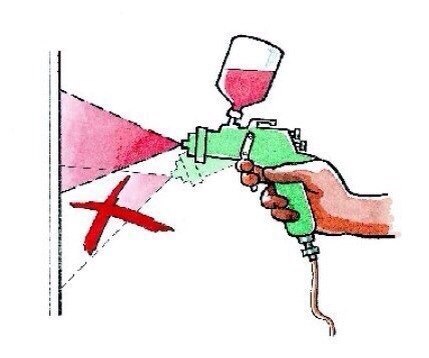
- It is important to comply distance between object and airbrush. The closer the device is to the surface being treated, the thicker the lines are, and the color is more saturated.
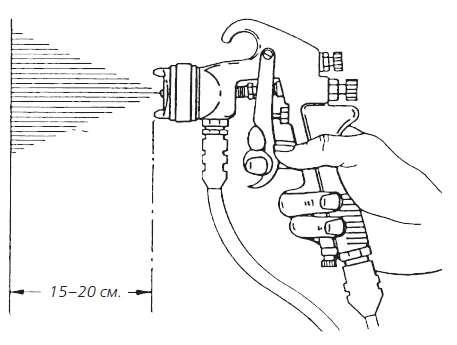
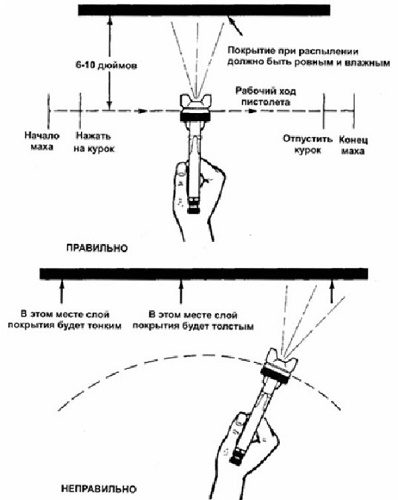
- It is best to remove smudges after they dry out. If you try to catch a falling drop with a dry cloth, a divorce may remain.Correcting the effects of picking up a drop is more difficult than removing a dried drop with a sandpaper-null.
- It is important to keep on hand several containers, each of which can add color. This will significantly save time on replacing the cans. In addition, it is very easy to clean such containers.
- It is better to varnish a surface, having waited full drying paint. If the technology of applying lacquer is not followed, its foundation will lie unevenly.
Sometimes, when working with fine details of models, it is possible to use not only sandpaper, but also abrasive used for polishing silver and other metals.
The secrets of airbrush painting allow you to constantly improve your skills. True, the main trick, which is constantly spoken by all experts, is experience. You need to constantly train and hone your skills. An understanding of the process of working with an airbrush and the features of its operation will come with time.
Conclusion
Working with an airbrush conceals a few features, but they are all comprehended during the operation of the device. Based on a number of tips above, you can eliminate some of the most common mistakes,making your experience with the tool more vivid and creative.

/rating_off.png)







